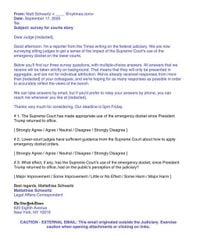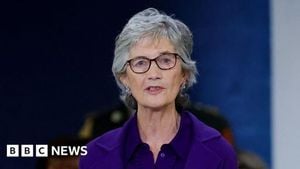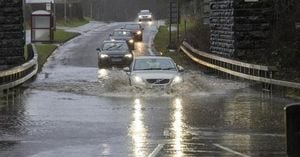More than three dozen federal judges have raised the alarm over the Supreme Court’s recent handling of emergency orders, particularly in cases tied to the Trump administration’s push to expand executive power. According to reporting by The New York Times on October 11, 2025, these so-called “shadow docket” decisions—brief, often opaque rulings that determine whether contested administration policies stay in place during litigation—have sown confusion and frustration throughout the federal judiciary. The fallout, judges say, is not just procedural chaos but a dent in the judiciary’s public image.
The heart of the controversy lies in the Supreme Court’s increasing reliance on its emergency docket. While these orders are officially temporary, their practical consequences have been profound. As The New York Times details, such rulings have enabled the Trump administration to deport tens of thousands of people, discharge transgender military service members, terminate thousands of government workers, and enact deep cuts to federal spending—all before the underlying legal disputes were resolved by lower courts.
This growing use of emergency decisions has not gone unnoticed by the bench. In a rare and unusually candid critique, dozens of lower court judges told The New York Times that the Supreme Court’s approach has left them “confused about how to proceed in those matters and are hurting the judiciary’s image with the public.” One judge described the current relationship between district courts and the Supreme Court as resembling “a war zone.” Another called it a “judicial crisis.” The words “mystical,” “overly blunt,” “incredibly demoralizing and troubling,” and “a slap in the face to the district courts” were all used by federal judges to characterize the Supreme Court’s emergency orders, according to The Volokh Conspiracy’s summary of the Times’ findings.
The Times’ report is based on a survey sent to hundreds of federal judges across the country, with particular emphasis on those serving in districts that have handled at least one major legal challenge to President Trump’s agenda. Out of more than 400 judges contacted, 65 responded to the questionnaire. Of those, 47 said the Supreme Court had mishandled its emergency docket since Mr. Trump returned to office. Forty-two judges went so far as to say that these orders had caused “some” or “major” harm to the public’s perception of the judiciary. Notably, nearly half of the Republican-nominated judges who responded agreed that the Supreme Court’s actions had damaged the judiciary’s standing in the public eye. Only twelve judges believed the Supreme Court had handled its emergency docket appropriately, and just two thought public perception of the judiciary had improved as a result.
Political lines did not entirely predict opinions. Of the 65 respondents, 28 were nominated by Republican presidents—including 10 by President Trump himself—while 37 were nominated by Democrats. While Democratic appointees were generally more critical, concerns crossed party lines. This, as The Volokh Conspiracy points out, is significant given the longstanding traditions of bipartisan support in district court appointments. Historically, a judge’s political leanings have often reflected the composition of their state’s Senate delegation as much as, if not more than, the party of the president who appointed them.
But the survey’s methodology has itself become a point of contention. The Volokh Conspiracy notes that the Times did not seek a random or representative sample of federal judges. Instead, it focused on those in districts most likely to handle challenges to Trump administration policies—a population arguably predisposed to skepticism about the Supreme Court’s interim relief orders. This sampling strategy, critics argue, may have amplified negative sentiments. “Would the Times story hit quite the same way if it had reported ‘Fewer than fifteen percent of surveyed federal judges expressed concern about the Supreme Court’s handling of the shadow docket’?” the blog mused, suggesting that the framing of the results could influence public perception as much as the results themselves.
Further complicating matters is the delicate position of federal judges when it comes to public commentary. The code of conduct for federal judges requires them to “act in ways that promote public confidence in the integrity and impartiality of the judiciary.” As a result, judges seldom speak out on public controversies and almost never comment on Supreme Court jurisprudence outside the formal context of written opinions. The Times survey was conducted under strict anonymity, allowing judges to share their views candidly without fear of violating ethical norms—but also raising questions about the representativeness of those who chose to respond.
Judge J. Harvie Wilkinson III, a Reagan appointee to the U.S. Court of Appeals for the Fourth Circuit, offered a more nuanced perspective in an interview with the Times. He acknowledged the extraordinary pressures facing the Supreme Court, noting that “a high volume of emergency challenges to a presidency that ‘would put its foot on the pedal, because it has an agenda, and it’s sensitive to the fact that electoral mandates are perishable.’” Judge Wilkinson recognized the value of the emergency docket in quickly and uniformly managing the executive branch’s mushrooming caseload. However, he cautioned against overuse: “You don’t want too many snap judgments and emergency orders creating a public impression of either secretiveness or arbitrariness.”
The underlying tension is clear: the Supreme Court’s emergency orders are shaping major policy outcomes before full legal arguments are heard, leaving lower courts scrambling for guidance and the public questioning the judiciary’s impartiality. The situation is further complicated by the surge in litigation challenging the Trump administration’s efforts to expand executive power, which has made the emergency docket a central battleground in the nation’s ongoing constitutional debates.
For the federal judges on the front lines, the stakes are personal as well as institutional. As one judge told the Times, the current environment feels “incredibly demoralizing and troubling.” For the Supreme Court, the challenge is to balance the need for swift action with the imperative to maintain transparency, consistency, and public trust. And for the public, these behind-the-scenes struggles shape not only the fate of high-profile policies but also the broader perception of the rule of law in America.
As these tensions play out, the judiciary finds itself at a crossroads—caught between the demands of a fast-moving political agenda, the constraints of tradition and ethics, and the ever-watchful eye of a skeptical public. The coming months may reveal whether the courts can restore a sense of order and confidence, or whether the strains exposed by this extraordinary moment will leave lasting marks on the nation’s legal landscape.




